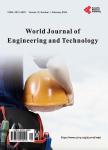Contribution to the Optimization of the Transient Stability of an Electric Power Transmission Network Using a Universal Power Flow Compensator Controlled by a Three-Stage Inverter
Contribution to the Optimization of the Transient Stability of an Electric Power Transmission Network Using a Universal Power Flow Compensator Controlled by a Three-Stage Inverter作者机构:Laboratory of Computer and Automatic Engineering UFD of Engineering Sciences ENSET University of Douala Douala Cameroon Higher Normal School of Technical Education ENSET of EBOLOWA University of Yaoundé Yaoundé Cameroon
出 版 物:《World Journal of Engineering and Technology》 (世界工程和技术(英文))
年 卷 期:2020年第8卷第4期
页 面:675-688页
学科分类:080802[工学-电力系统及其自动化] 0808[工学-电气工程] 08[工学]
主 题:FACTS UPFC Three-Stage Inverter PI Power Transit Transient Stability
摘 要:The use of an electrical network as close as possible to its limits can lead to its instability in the event of a high amplitude disturbance. The damping of system oscillations can be achieved by conventional means of voltage and speed regulation but also by FACTS (Flexible AC Transmission Systems) devices, which are increasingly used in power networks. In this work, optimal control coordination between a hybrid power flow controller and a three-level inverter was used to improve the transient stability of a transmission line. The UPFC is a combination of a serial compensator (SSSC) and a parallel compensator (STATCOM) both connected to a DC-LINK DC bus. The SSSC acts as a voltage source for the network and injects a voltage that can be adjusted in phase and amplitude in addition to the network voltage;the STATCOM acts as a current source. The approach used is tested in the Matlab Simulink environment on a single machine network. Optimal controller tuning gives a better transient stability improvement by reducing the transport angle oscillations from 248.17% to 9.85%.



